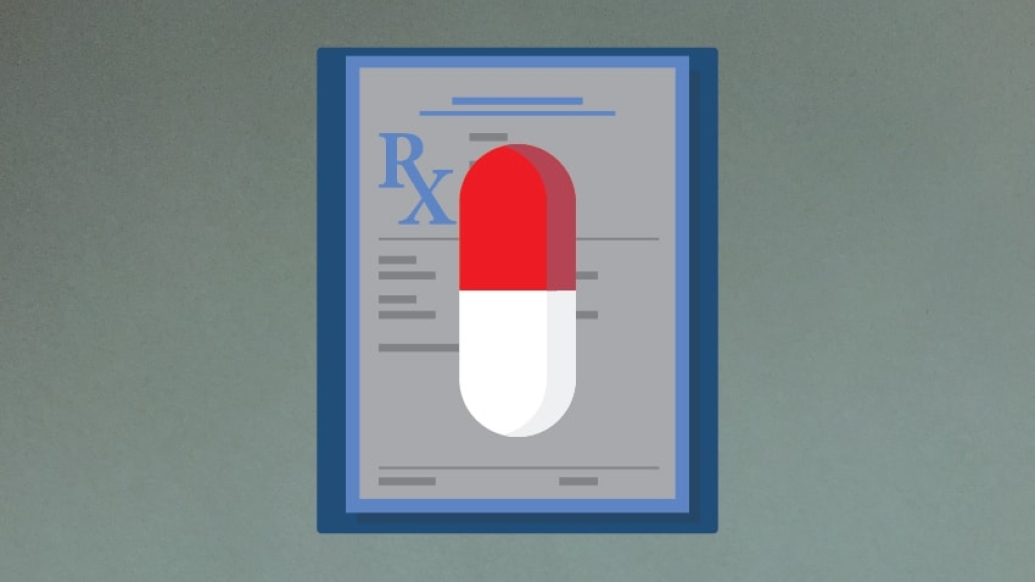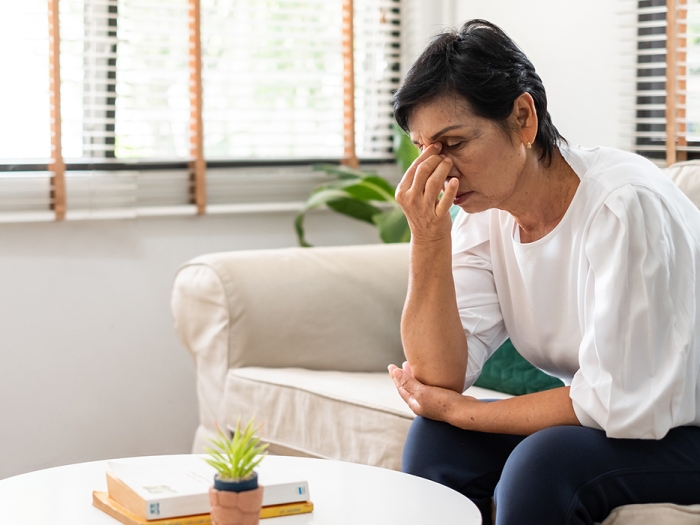Post-surgery pain medication can ease recovery — but it can also lead to long-term problems. A new, free tool based on actual patient use can help.
7:00 AM
Author |

How many prescription pain pills should a patient receive after breast cancer surgery? Or hernia repair? Or gallbladder removal?
MORE FROM THE LAB: Sign up for our weekly newsletter
With the country facing an epidemic of opioid pain medication abuse, the answer should be simple: just enough to ease immediate post-surgery pain.
But surgical teams have lacked an evidence-based guide, or even rules of thumb, to help them gauge this amount.
Until now.
A new tool developed at the University of Michigan, now available online for free, details recommendations for 11 common operations, based on pain control and surgical quality research, as well as data and surveys from patients throughout Michigan.
"It's embarrassing to admit this, but we've never had any evidence to inform how much opioid we prescribe to surgical patients. These recommendations provide a crucial first step for improving the safety of opioid prescribing," says Jay Lee, M.D., a general surgery resident at Michigan Medicine, U-M's academic medical center, who helped create the recommendations.
The Opioid Prescribing Recommendations for Surgery are just a start, Lee says. The team behind them hopes to add more operations and medications to the list and to refine the recommendations based on additional research into patient behavior and how providers can counsel them about safe medication use.
The Michigan Opioid Prescribing Engagement Network (Michigan-OPEN), in collaboration with the Michigan Surgical Quality Collaborative (MSQC), both based at the U-M Institute for Healthcare Policy and Innovation, created the guide.
Many of the patients factored into the recommendations had their operations at the 72 hospitals taking part in MSQC, which gathers and analyzes surgery-related data to help surgical teams find ways to improve and learn from others. Funded by Blue Cross Blue Shield of Michigan, MSQC provided a rich source of information about what patients were prescribed, what they used and how they fared after surgery.
It's embarrassing to admit this, but we've never had any evidence to inform how much opioid we prescribe to surgical patients.Jay Lee, M.D.
Grounded in evidence
Michigan-OPEN researchers have previously shown that when patients are prescribed fewer pills, they consume less with no changes in pain or satisfaction scores.
SEE ALSO: Rural Communities See Steep Increase in Babies Born with Opioid Withdrawal
So, the first prescribing recommendations focus on a range of common operations, including hysterectomy, colon surgery, appendectomy and breast biopsy, and detail the amounts of hydrocodone, oxycodone, tramadol and codeine or acetaminophen to prescribe in an easy-to-print chart.
The amounts represent the maximum opioid use reported by three-quarters of surgery patients. Most patients took far less, from zero to five pills, even when their surgeon or another provider prescribed more.
The recommendations are meant specifically for patients who have never taken opioid painkillers before.
U-M researchers found this year that of this "opioid naïve" group, 6 percent still take opioid pain medications three to six months after their operations — long after their surgery pain should have eased. This suggests problematic use that could lead to opioid addiction or even to the use of illicit drugs such as heroin.
Resources for providers and patients
The Michigan-OPEN team has also created a brochure about post-surgery opioid medication use that surgical teams can give to patients. The website also includes talking points about pain expectations and medication use to guide care team members.
"Reducing the number of pills we prescribe protects our patients as well as our community from the harms of opioid dependence, addiction and overdose," says Joceline Vu, M.D., a surgical resident who worked on the recommendations with Lee and Michael Englesbe, M.D., a co-director of the Michigan-OPEN effort and surgery professor at U-M. "We know it'll take involvement of the community to help fix this problem."
"Patients trust us when we prescribe opioids to treat pain after surgery," Vu says. "It's our responsibility to teach them about the potential harms and how to dispose of opioids safely."
Taking back the leftovers
Even if surgical teams adopt these prescribing recommendations, patients are likely to have pills left over. That's why the Michigan-OPEN team has developed a map to help Michiganders find nearby prescription drug drop-off locations.
The team also created materials to help health care facilities hold prescription drug takeback events with local law enforcement agencies. One such event, held in late September at eight sites around Michigan, collected 17,500 opioid pills — and tens of thousands of other medications that could be abused.
The new recommendations were recently shared with leaders of the surgical teams taking part in MSQC, who hope to start adopting them in their own hospitals.
"They're all very much aware of the crisis caused by overprescribing opioids and have embraced these recommendations as an effective tool to begin addressing this problem," says Lee. "We hope these recommendations will drive continued improvement, and that as counseling and pain management strategies improve, patients will use less opioid medication."
Hear more about the epidemic and the recommendations in the video below:

Explore a variety of healthcare news & stories by visiting the Health Lab home page for more articles.

Department of Communication at Michigan Medicine
Want top health & research news weekly? Sign up for Health Lab’s newsletters today!





